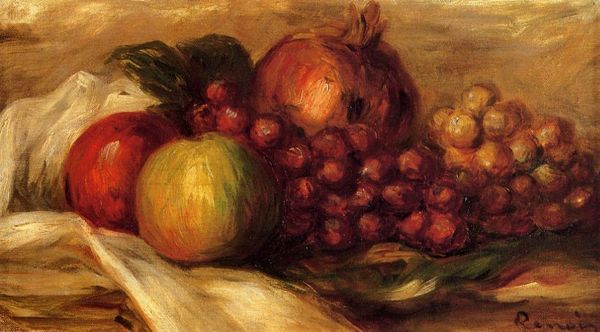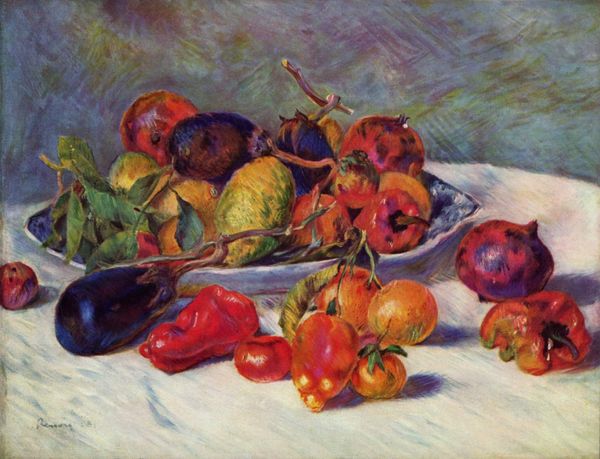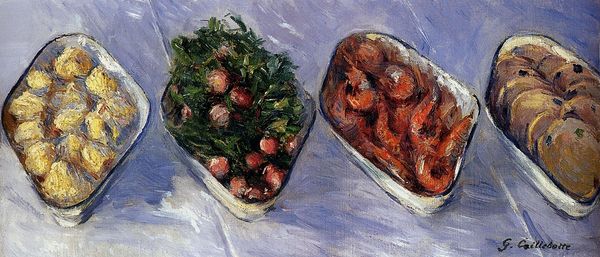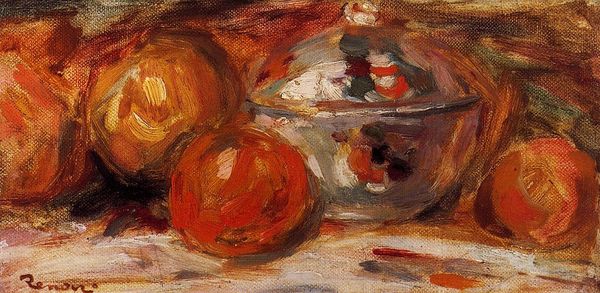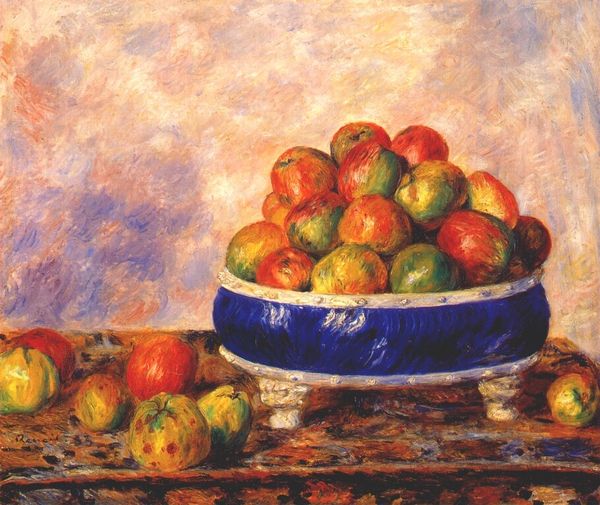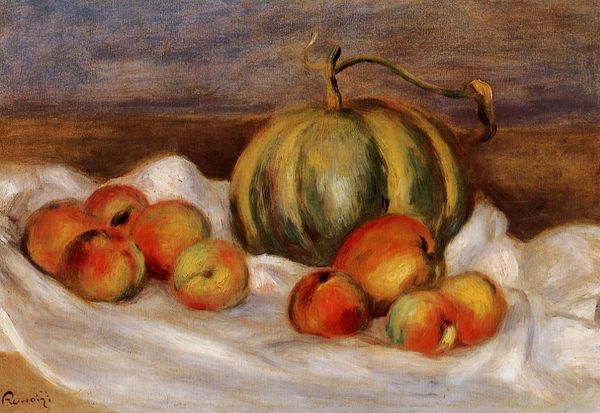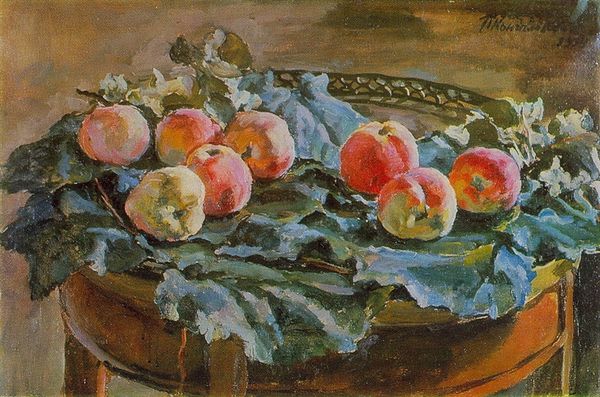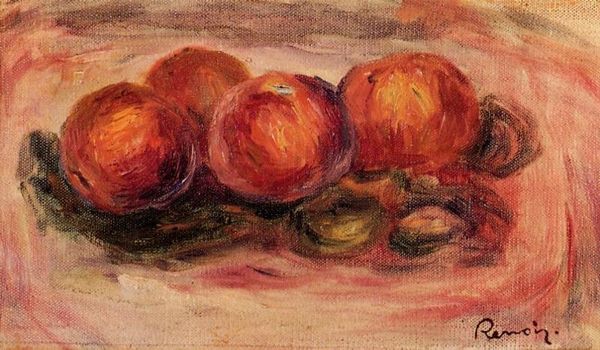
tempera, painting, oil-paint
#
still-life
#
food
#
tempera
#
painting
#
impressionism
#
oil-paint
#
oil painting
#
fruit
#
plant
#
painting painterly
#
post-impressionism
#
watercolor
Copyright: Public domain
Curator: Here we have Pierre-Auguste Renoir's "Still Life with Strawberries" from 1880. It is an oil painting, currently held in a private collection. Editor: Immediately, I’m struck by its intimacy. It feels like a stolen glance at a summery moment. The berries pulse with juicy ripeness. Curator: Indeed. Look closely at Renoir's technique. You see the visible brushstrokes, capturing light as it reflects off each berry and leaf. He uses oil paint but almost in a watercolor fashion. Editor: The strawberry, of course, has been a symbol of perfection, righteousness, even paradise. And it carries connotations of sensuality, temptation… think of its heart-like shape, the vibrant red. What's Renoir doing with that here? Curator: Well, think about the context of the late 19th century, a growing middle class, and the increasing accessibility of these kinds of luxury goods, strawberries as a refined indulgence and an expansion of agricultural and economic infrastructure that supported their trade. Editor: Interesting, framing strawberries in a socio-economic way. It does challenge our immediate sense of "pleasure," but that works with what I know of Renoir. It becomes almost confrontational through the way it's depicted. Curator: I find this very deliberate – placing the "natural" next to human-made labor in an artifical manner. This presentation reflects the culture that cultivated it and put it into the hands of consumers. The artistry, not just in depicting strawberries, but subtly asking us where our strawberries come from. Editor: And of course the symbolism continues…consider how this intimate presentation still feels distant because we know the art market and its system of commodification makes a painting like this a status symbol, out of everyday reach. Even still life gains resonance from these themes. Curator: Absolutely. It transforms what could be a simple, pleasing image into a commentary on the times. Editor: It truly highlights the power of objects to encapsulate entire worlds of meaning, from personal desires to systemic inequalities. Curator: Right, and when one analyzes materials, labor and how these align to influence subject choice, “Still Life with Strawberries” brings its sweetness with a tart edge.
Comments
No comments
Be the first to comment and join the conversation on the ultimate creative platform.
